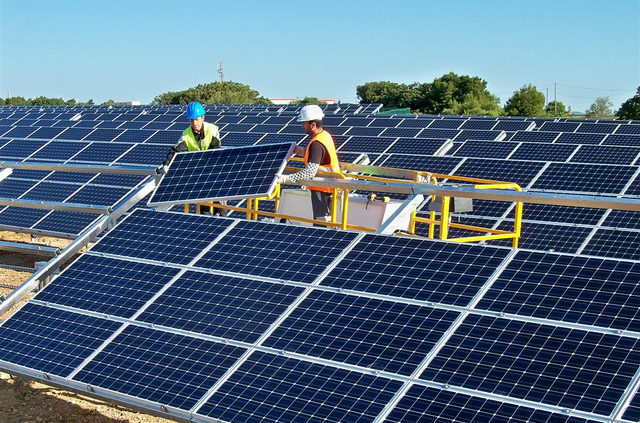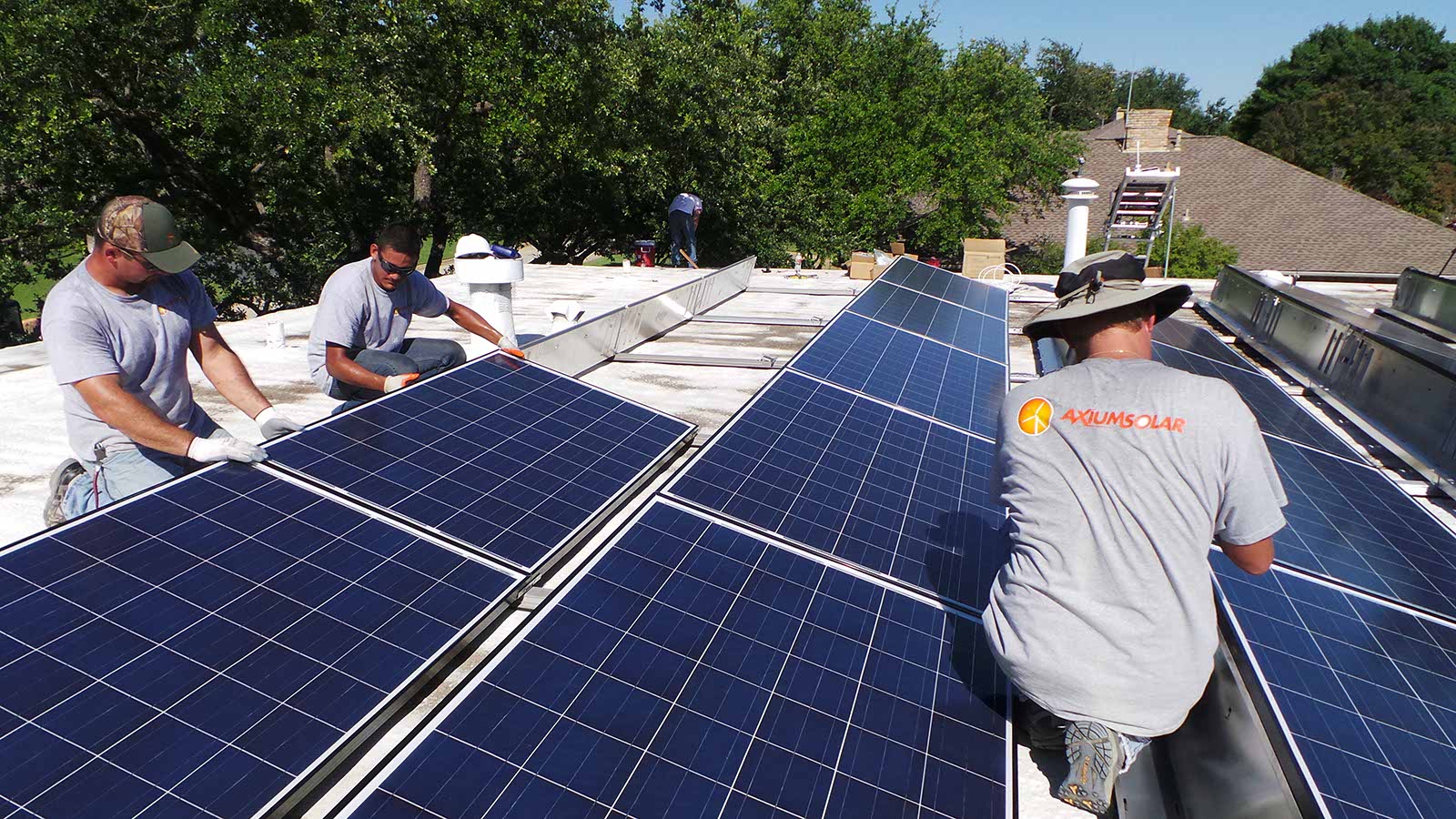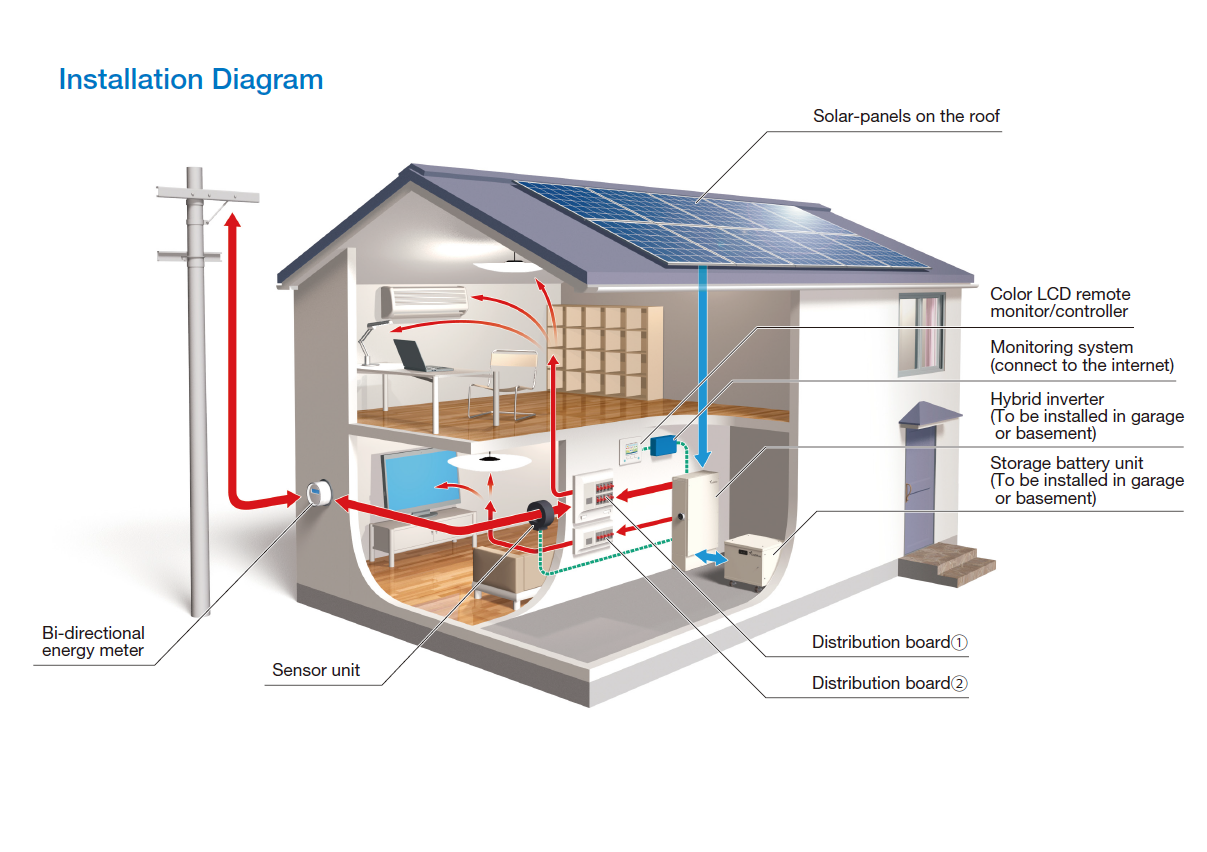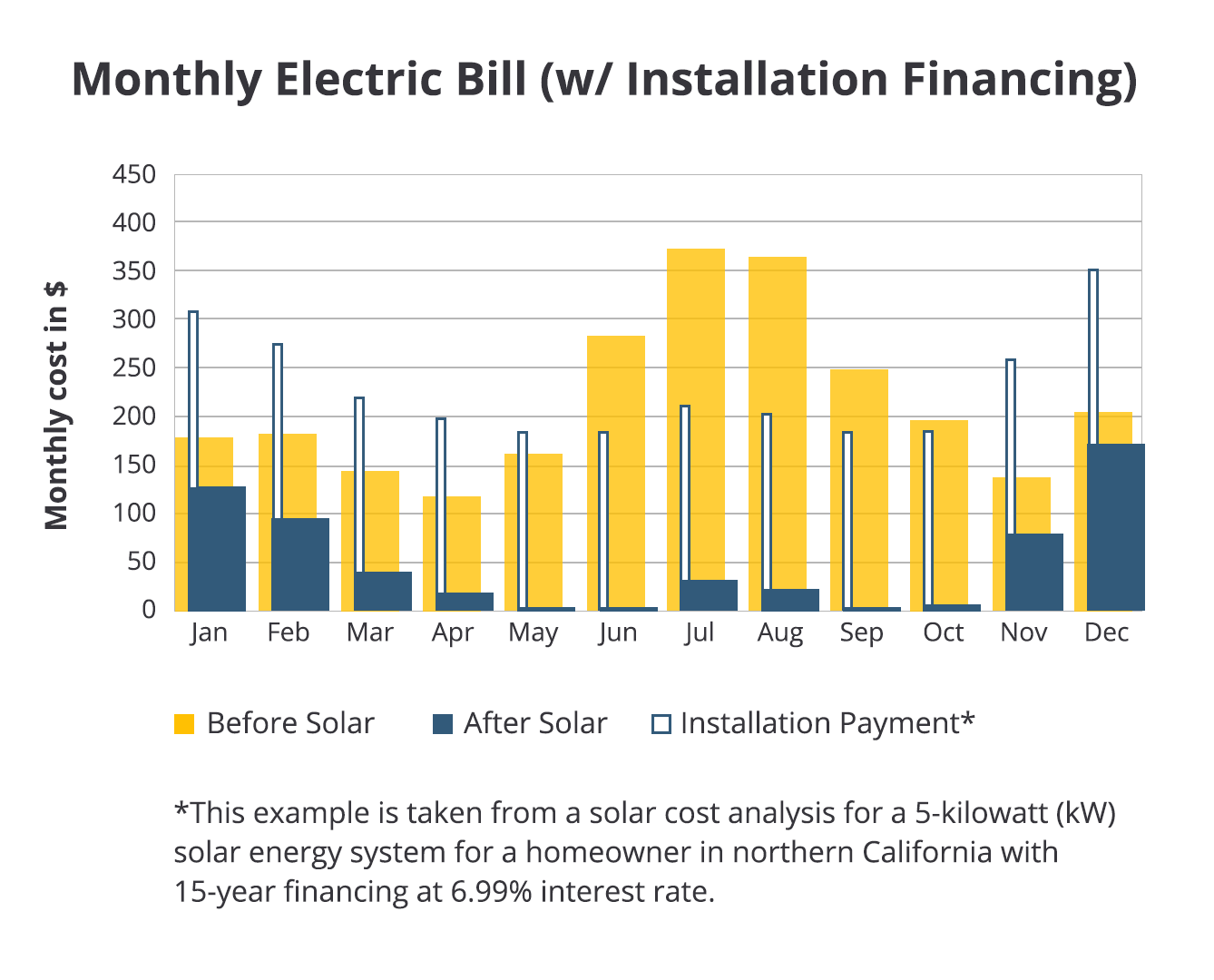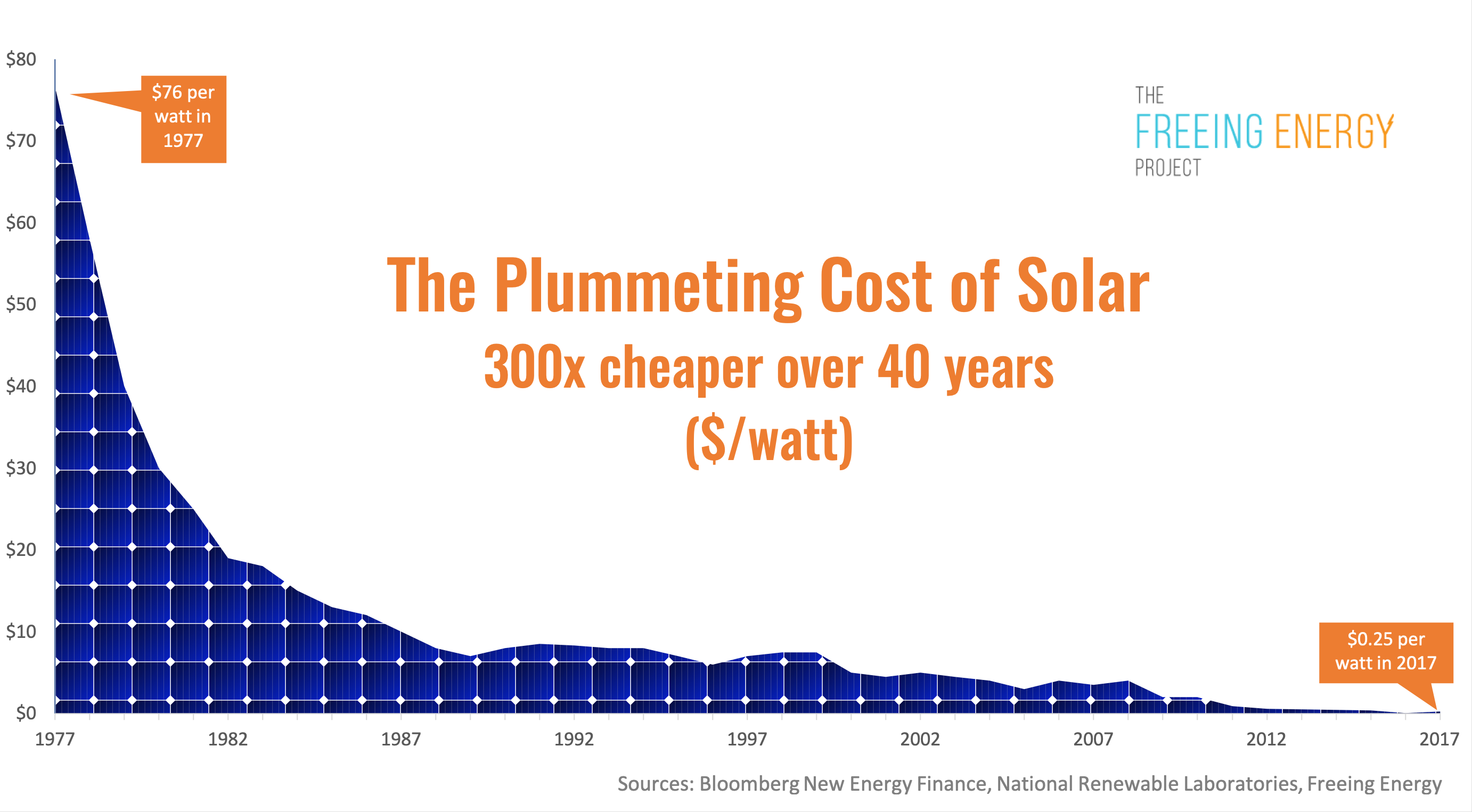Solar energy is the technology used to harness the sun’s energy and make it useable. As of 2011, the technology produced less than one tenth of one percent of global energy demand. Many are familiar with so-called photovoltaic cells, or solar panels, found on things like spacecraft, rooftops, and handheld calculators.
Solar energy: what you need to know
Solar power is usable energy generated from the sun in the form of electric or thermal energy. Solar energy is captured in a variety of ways, the most common of which is with photovoltaic solar panels that convert the sun’s rays into usable electricity. Aside from using photovoltaics to generate electricity, solar energy is commonly used in thermal applications to heat indoor spaces or fluids. Residential and commercial property owners can install solar hot water systems and design their buildings with passive solar heating in mind to fully take advantage of the sun’s energy with solar technology.
Interested in benefiting from solar power? Solar panels are installed at three main scales: residential, commercial, and utility. Residential-scale solar is typically installed on rooftops of homes or in open land (ground-mounted) and is generally between 5 and 20 kilowatts (kW), depending on the size of a property. Commercial solar energy projects are generally installed at a greater scale than residential solar. Though individual installations can vary greatly in size, commercial-scale solar serves a consistent purpose: to provide on-site solar power to businesses and non-profits. Finally, utility-scale solar projects are typically large, several megawatt (MW) installations that provide solar energy to a large number of utility customers.
For some solar shoppers who may not be able to install solar on their property, community solar is a viable solar option that more directly connects utility-scale solar energy projects to residential consumers. As such, community solar farms are typically built in a central location as opposed to on any single customer’s property. Residential consumers can subscribe to a community solar project to receive many of the benefits of solar power without installing solar panels on their property.
A brief history of solar power
In 1954, Bell Labs developed the first silicon photovoltaic cell. Although solar energy had previously been captured and converted into usable energy through various methods, only after 1954 did solar power begin to become a viable source of electricity to power devices over extended periods of time. The first solar cells converted solar radiation to electricity at an efficiency of 4 percent – for reference, many widely available solar panels today can convert sunlight to solar power at above 20 percent efficiency, a number constantly on the rise.
Although adoption of solar energy was slow at first, a number of state and federal incentives and policies contributed to driving down the cost of solar panels far enough to become more widely adopted. At this point, solar power accounts for enough capacity to power 11 million of the 126 million households in the country.
Smart solar modules
Several companies have begun embedding electronics into PV modules. This enables performing MPPT for each module individually, and the measurement of performance data for monitoring and fault detection at module level. Some of these solutions make use of power optimizers, a DC-to-DC converter technology developed to maximize the power harvest from solar photovoltaic systems. As of about 2010, such electronics can also compensate for shading effects, wherein a shadow falling across a section of a module causes the electrical output of one or more strings of cells in the module to fall to zero, but not having the output of the entire module fall to zero.
Module performance is generally rated under standard test conditions at 25°C. The actual voltage and current output of the module changes as lighting, temperature and load conditions change, so there is never one specific voltage, current, or wattage at which the module operates. Performance varies depending on time of day, amount of solar insolation, direction and tilt of modules, cloud cover, shading, temperature, geographic location, and day of the year.
The largest challenge for photovoltaic technology is said to be the purchase price per watt of electricity produced. New materials and manufacturing techniques continue to improve the price to power performance. The problem resides in the enormous activation energy that must be overcome for a photon to excite an electron for harvesting purposes. Advancements in photovoltaic technologies have brought about the process of “doping” the silicon substrate to lower the activation energy thereby making the panel more efficient in converting photons to retrievable electrons.
The cost of solar energy
Concurrent with an increase in solar panel efficiency, the cost of solar energy has fallen substantially. In the last decade alone, the cost of a solar panel installation fell over 60 percent, and many industry experts predict that prices will continue to fall in the years to come:
Additionally, depending upon where you live, several rebates or incentives for solar power may contribute towards lowering the cost of solar energy even further. Nationwide, the federal Investment Tax Credit (ITC) is one of the primary incentives available to anyone interested in solar energy, as it allows you to deduct 30 percent of the cost of installing a solar system from your federal taxes. Many states and utilities offer further incentives (such as net metering) in addition to the federal ITC, dropping the cost of solar power even further.
Solar energy is a renewable power source
Solar energy is a clean, inexpensive, renewable power source that is harnessable nearly everywhere in the world – any point where sunlight hits the surface of the earth is a potential location to generate solar power. And since solar energy comes from the sun, it represents a limitless source of power. Renewable energy technologies generate electricity from resources that are infinite. Compare, for instance, producing electricity with renewable resources to doing so with fossil fuels. It took hundreds of thousands of years for oil, gas and coal to form, so every time one of those resources are burned to create electricity, that finite resource is moved marginally closer to depletion. Using a renewable resource – such as wind, solar and hydropower – to generate electricity, does not deplete that resource. There will always be consistent sunlight shining on Earth’s surface, and after turning sunlight into electricity, there is still an infinite amount of sunlight to turn into electricity in the future. That is what makes solar power, by nature, renewable energy.
While the current electricity mix in the United States is still made up largely of fossil fuels like oil and gas, renewable energy sources like solar are steadily becoming a larger part of the country’s energy profile. As the cost of solar and other renewable technologies continues to be competitive.
Solar saves on energy costs and electric bills
Eliminate or significantly reduce your electric bill with solar energy
One of the biggest reasons to go solar is that you can eliminate or significantly reduce your electric bill. An average monthly electric bill of $100 becomes an annual $1,200 expense. Over 20 years, that same $100 monthly bill balloons to $24,000 paid to your utility, and that’s before factoring in electricity rate increases that will likely make your 20-year energy costs even higher. Installing a solar panel system at your home or business takes you out of this cycle.
Going solar can eliminate your electric bill completely or reduce it so dramatically that electricity costs are no longer a significant factor in your budget. Your savings with solar depend on a few different factors, like how much energy your system produces and how much you consume, but the biggest factor is the rates you would otherwise pay to your utility.
Because your savings are equal to the costs you avoid by going solar, you’ll save even more if electricity rates are high in your area. And, since electricity prices will continue to rise, your savings will continue to grow every year over the 25+ year lifespan of your solar panel system.
Reducing one of your largest monthly expenses makes perfect sense, but the benefits of solar aren’t just economic. Because electricity prices can be unpredictable, they make managing your budget difficult. By installing a solar panel system, you also fix your electricity costs and make them more predictable. This is especially beneficial for anyone with a fixed income, as well as for businesses who stand to gain from a more stable cash flow. When you make your electricity costs more predictable by going solar, you also improve your expense forecasting and management capabilities.
Types of solar panel installations
Solar photovoltaic (PV) panels are a versatile energy technology that can help electric customers of all kinds with their electricity needs. There are three main categories of solar panel installation: residential, commercial/industrial, and utility-scale. They primarily differ in size and location, and also are unique in several other system characteristics.
Residential solar panel installations
Homeowners almost anywhere can benefit from a solar panel installation right on their property. Residential installations are typically rooftop or ground-mounted systems and supply electricity to one property.
Commercial and industrial solar panel installations
Factory rooftops can be a great place for a solar panel project and are categorized as commercial or industrial installations. Commercial solar projects supply energy to small businesses, factories, and more. These installations can be a powerful source of savings for companies and corporations.
Utility-scale solar panel installations
Electrical utilities have traditionally generated electricity for the grid using fossil fuels like coal, but they can also provide electrical power to their grid customers with a solar panel installation. Utility-scale solar power plants can be massive, and when combined with storage, can effectively support the power grid.
Solar panel incentives, rebates & tax breaks
Solar energy delivers positive environmental impacts, contributes to our nation’s energy independence, and provides more jobs than the coal or upstream oil & gas sectors in the United States. To encourage the continued expansion of solar, governments, utilities and other organizations offer solar tax breaks and financial incentives to make solar more accessible for today’s homeowners. As a result, you can reduce the net cost of your solar panel system by anywhere from 30 to 50 percent.


